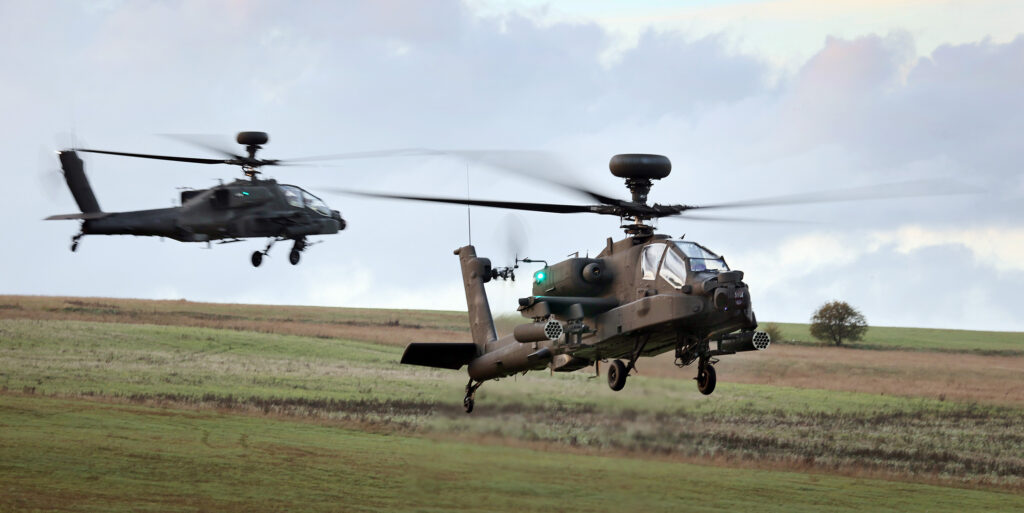The British Army has trialed its new AH-60E Apache attack helicopter with frontline service deployment at a recent exercise in Northumberland.
The 3 Regiment Army Air Corps flew the new rotorcraft throughout the two-week trial to upskill in evolving aviation scenarios as seen from the ongoing Ukrainian conflict, such as the involvement of modern aerial drones, air defense, and electronic warfare.
“We’re tailoring what we do based on the lessons of the modern battlefield and the requirements of our role, which is to provide aviation deep attack as part of the Army’s warfighting division,” an air corps captain stated regarding the exercise.
“We’ve had to completely change how we operate both in the air and on the ground, to best exploit the AH-64E’s improved sensors, weapons and communications systems, as well as its better flying performance.”
Securing Support Teams
Alongside frontline drills, the UH-60E’s modernized features were used in training with forward arming and refueling points (FARP) to protect critical support teams from enemy detection.


“Once an aircraft is at a FARP, then we’re an obvious and high-value target. The clock’s ticking and we must fuel and rearm it quickly, get it back in the air and then move ourselves before we get fired on,” Arming and Loading Point Commander Oliver Kenyon explained.
“We need to be more mobile and tactically-minded to survive. We can’t just set up in a fixed location, so we’ve split down to small, self-sufficient teams that work to a matrix of locations and times,” Staff Sergeant Steve Tymms added.
Apache Support in Dispersed Positions
The army assigned its Royal Electrical and Mechanical Engineer team to focus on the maintenance of the latest UH-60E, enabling support for the helicopter from dispersed positions instead of a traditional stationary location.
“We can’t expect to have the luxury of a well-established and secure base. Dispersal is about survivability, by presenting the enemy with lots of smaller targets rather than having all the aircraft parked together,” Aircraft Technician Lance Corporal Chris Voller said.
“Working like this is more challenging and needs good communication and planning to think about the kind of jobs we’ll be doing and the tools and spare parts that we’ll need.”


